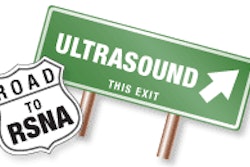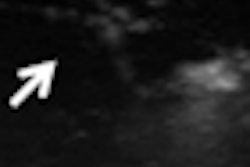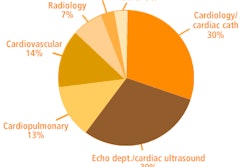The use of musculoskeletal ultrasound has risen rapidly among nonradiologist physicians such as podiatrists, rheumatologists, primary care physicians, and physical medicine and rehabilitation specialists, according to presenter Richard Sharpe, MD. In fact, utilization has risen so rapidly that insurers in four states -- Illinois, New Mexico, Oklahoma, and Texas -- for a time denied all claims for nonoperative spinal and musculoskeletal ultrasound, a policy that was rescinded in February 2010.
Thomas Jefferson researchers wanted to document the magnitude of growth in musculoskeletal ultrasound utilization; the group examined source data from the Physician/Supplier Procedure Summary Master Files from the U.S. Centers for Medicare and Medicaid Services from 2000 to 2008.
Overall, they found that in 2000, Medicare reimbursed for 56,000 musculoskeletal ultrasound studies, a number that rose 279% to 213,000 studies in 2008. The increase corresponds to a utilization rate of 171 procedures per 100,000 beneficiaries in 2000, a rate that grew to 610 procedures per 100,000 beneficiaries by 2008.
The volume of musculoskeletal ultrasound procedures performed grew at twice the rate among nonradiologists compared to radiologists during the study period, and nonradiologists are the most frequent users of musculoskeletal ultrasound in the office setting. Nonradiologists accounted for 71% of increased ultrasound musculoskeletal utilization from 2000 to 2008.
Insurers will most likely encourage the imaging community to adopt standards for performing musculoskeletal ultrasound, but such standards currently don't exist, according to Sharpe. The implementation of such standards would most likely benefit patients.



















